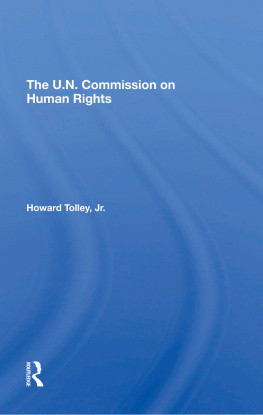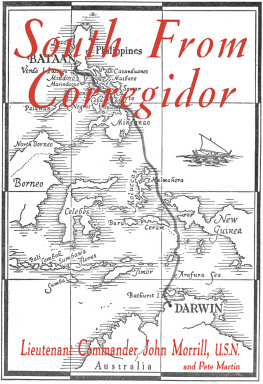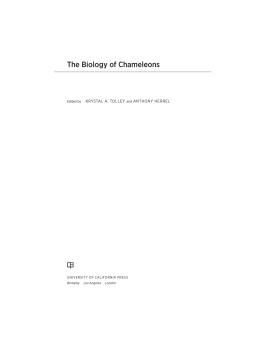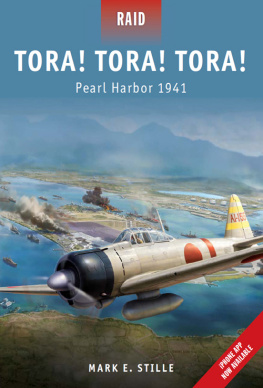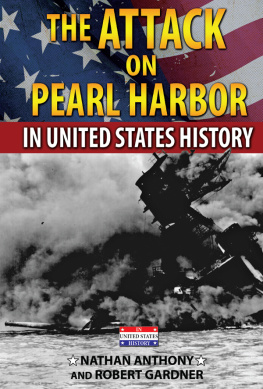

The latest edition of this book has been brought to publication with the generous assistance of Marguerite and Gerry Lenfest.
Naval Institute Press
291 Wood Road
Annapolis, MD 21402
1973 by Naval Institute Press
All rights reserved. No part of this book may be reproduced or utilized in any form or by any means, electronic or mechanical, including photocopying and recording, or by any information storage and retrieval system, without permission in writing from the publisher.
First Bluejacket Books printing, 2002
ISBN: 978-1-61251-223-5 (eBook)
Library of Congress Cataloging-in-Publication Data
Tolley, Kemp, 1908
Cruise of the Lanikai: incitement to war / Kemp Tolley.
p. cm. (Bluejacket books)
Originally published: Annapolis : Naval Institute Press, 1973.
Includes bibliographical references and index.
1. World War, 19391945Naval operations, American. 2. Lanikai (Ship) 3. World War, 19391945Personal narratives, American. 4. Tolley, Kemp, 1908 I. Title. II. Series.
D774.L33+
940.54'5973dc21
2002070348
17 16 15 14 13 6 5 4 3 2
To
dear friend, superlative shipmate, and acey-deucey player with promise, Charlie Adair, whose timely intervention in the release of Lanikai at Manila, then Surabaya, and again at Tjilatjap, unquestionably saved from certain capture, and probable death, all who sailed in her
and to
those stalwart crewmen, Filipino and American, whose determination, loyalty, and know-how brought Lanikai through.
You have caught Truth by the tail; dont let go! And if I were a little more pious than I am, I would be tempted to observe that the Lord had marvelously preserved you, and Lanikai, unscathed through so many perils, in order that you might bear witness to the Truth.
Excerpt from a letter written by Justice Frederic R. Sanborn to the author.
Contents
The United States Asiatic Fleet before World War II was essentially a political instrument designed to show the flag. In no way a fighting fleet, it included the heavy cruiser Houston, the light cruiser Marblehead, a squadron of old destroyers, and another of submarines. It had no worthwhile antisubmarine capability, nor amphibious capability, although the Fourth Marine Regiment was assigned. Other than 25 patrol seaplanes, there was no air capability.
Fleet routine was described in the old song Well all go up to China in the Springtime! Visits were made to Hongkong and various Chinese ports, including Shanghai, Tsingtao, Chefoo, Chinwangtao, and Tientsin. A handful of old gunboats made up the Yangtze and South China Patrols. Unfortunately, there were no visits to ports in Southeast Asia or Indonesia; a result of this policy was that when war came not one of our captains had experience in the treacherous waters south of the Philippines.
The Fleet had no experience in combined exercises with the British in Asian waters, although plans did exist for combined operations. After initial British Far East reverses their remaining naval forces were placed under the overall direction of the ABDA organization in Java, with Admiral Thomas C. Hart as the first commander of ABDAs naval elements.
A year before the outbreak of hostilities Admiral Hart had ordered the evacuation of all naval dependents from the Far East, and late in 1941 had sent the cruisers and most of the destroyers to Java. Left behind on Luzon were the submarines and a tender, the patrol planes, and most unfortunately, about 2,000 naval personnel. He also left the 67-ton auxiliary schooner Lanikai, which suddenly had become the subject of secret orders from Washington.
The skipper of Lanikai was Lieutenant Kemp Tolley who now, as a retired rear admiral, relates the Cruise of the Lanikai. The book is more than just another thrilling tale of war; it places the entire operation in the context of the times. Admiral Tolley has provided extensive documentation, including, for example, correspondence between Admiral Stark and Admiral Hart. I believe that some of this documentation has not previously been disclosed.
Too little has been written of these early days of conflict in the Pacific, when the Army and Navy were really fighting individual wars, and learned lessons that reshaped basic U.S. military philosophy. Those interested in the strategic direction of armed forces and in the command and control of these forces will find many examples here of how not to do it.
I sincerely hope that the reader enjoys this book as much as I have.

Robert L. Dennison
Admiral, U.S. Navy (Retired)
Since first treading the deck of that remarkable little ship, USS Lanikai, I have been intrigued by her story and what lay behind that story. For 30 years, I have probed, questioned and read, compiling the material contained here.
Some, among them several eminent historians, are skeptical for one reason or another, of the thesis I have derived. None has been able to provide any worthwhile evidence to discredit it. Tantalizingly, the only four who came into possession of direct evidence have refrained from talkingin their memoirs, under direct questioning, or elsewhere: President Roosevelt, Mr. Harry Hopkins, Secretary of State Cordell Hull, and Chief of Naval Operations Admiral Harold R. Stark. Their silence is perhaps more eloquent than words.
A number of others support me fully. They include four-star and other admirals, members of Congress, and many well-known authors and historians. After their having read the evidence, we are happy to ask the readers to be the jury.
I am grateful for the help and advice derived from conversations or letters exchanged with the late Admirals William H. Standley, Thomas C. Hart, and Husband E. Kimmel; with Admirals Royal E. Ingersoll and Robert L. Dennison; with Vice Admirals Francis W. Rockwell, John L. McCrea, Edward N. Parker, Thomas H. Binford; with Rear Admirals Charles Adair, Welford C. Blinn, James R. Davis, Henry W. Goodall, Walter E. Linaweaver, Arthur H. McCollum, Redfield Mason, John L. Pratt, Harry B. Slocum; with Major General Charles A. Willoughby; with Captains Laurence F. Safford, Thomas K. Kimmel, and John D. Lamade; and with Commander E. George Pollak. Captains Northrup H. Castle and Fred K. Klebingat, the latter a living encyclopedia of Pacific schooner lore, have filled me in on South Sea Island traders and Lanikais earlier history, supplemented by Mr. Lester F. Stone, whose father built the ship. Many other kind and helpful individuals will be identified as their contributions appear in the text.
I am grateful to Colonel E. M. Grimm and that remarkable ex-guerrilla, Commander Charles Parsons, for information on Lanikais Manila days and her ultimate end.
Next page

